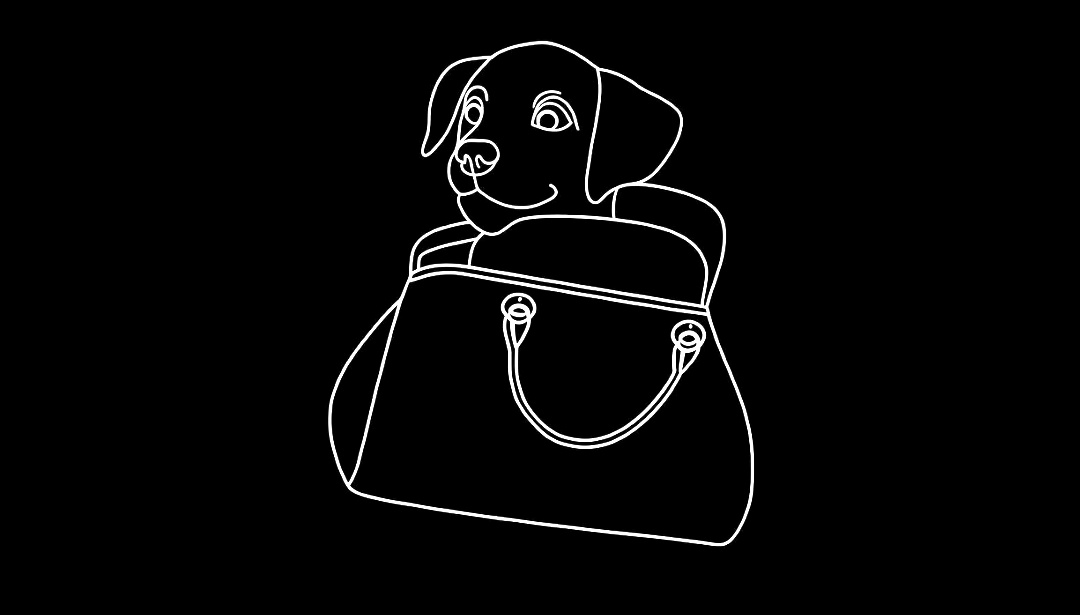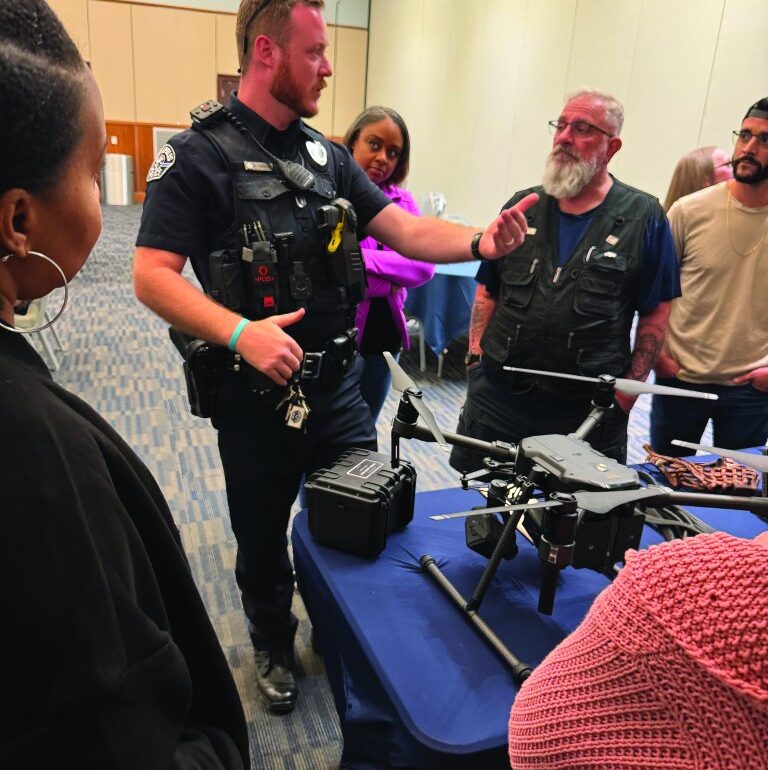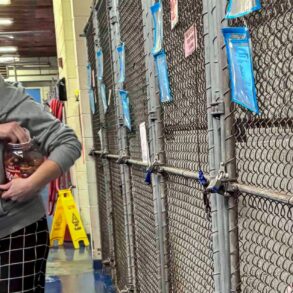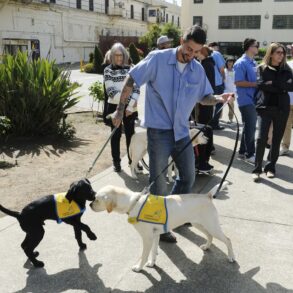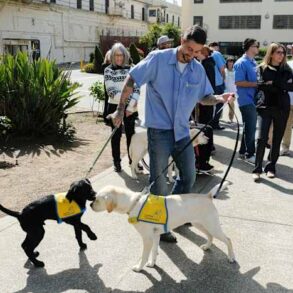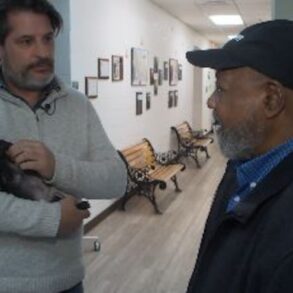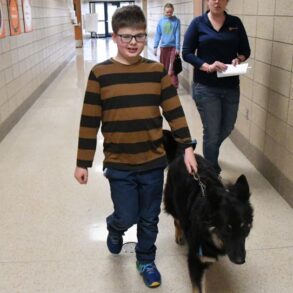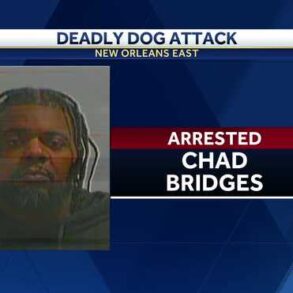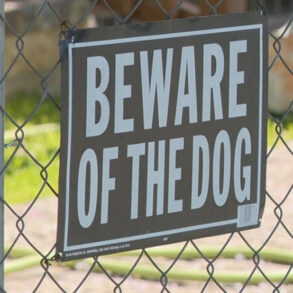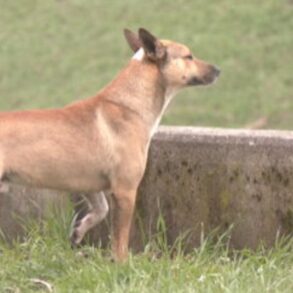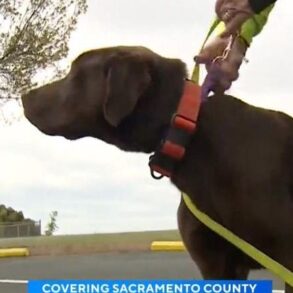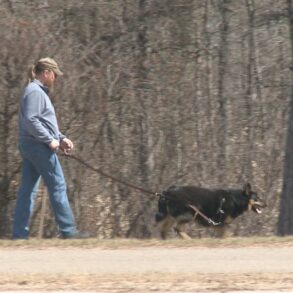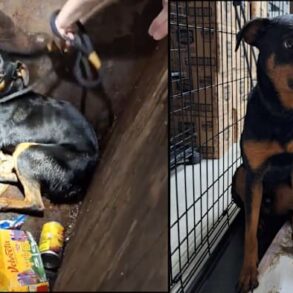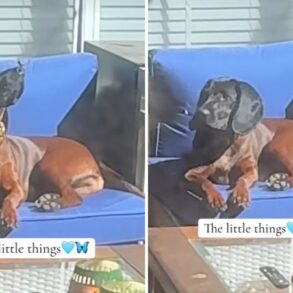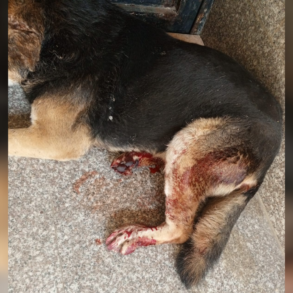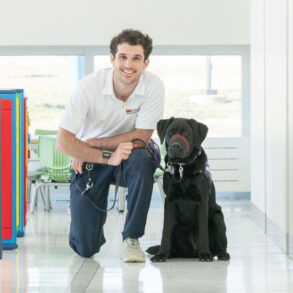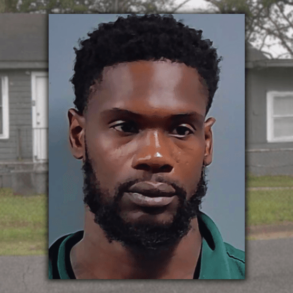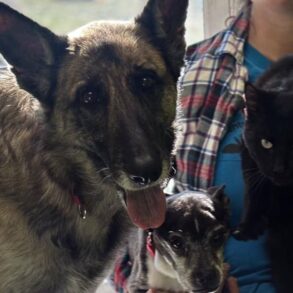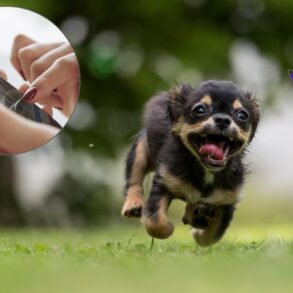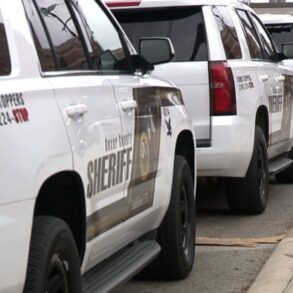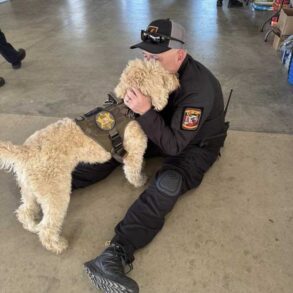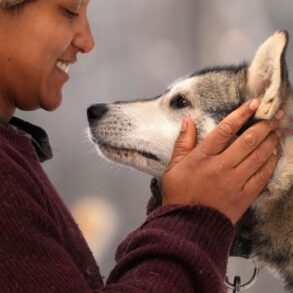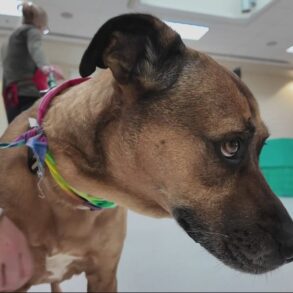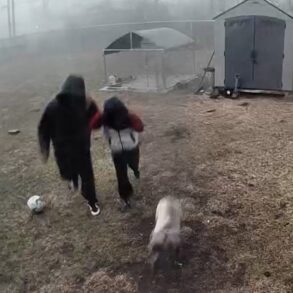Yes, that dog will bite: The next Citizen Police Academy installation
Published 12:05 am Sunday, March 30, 2025
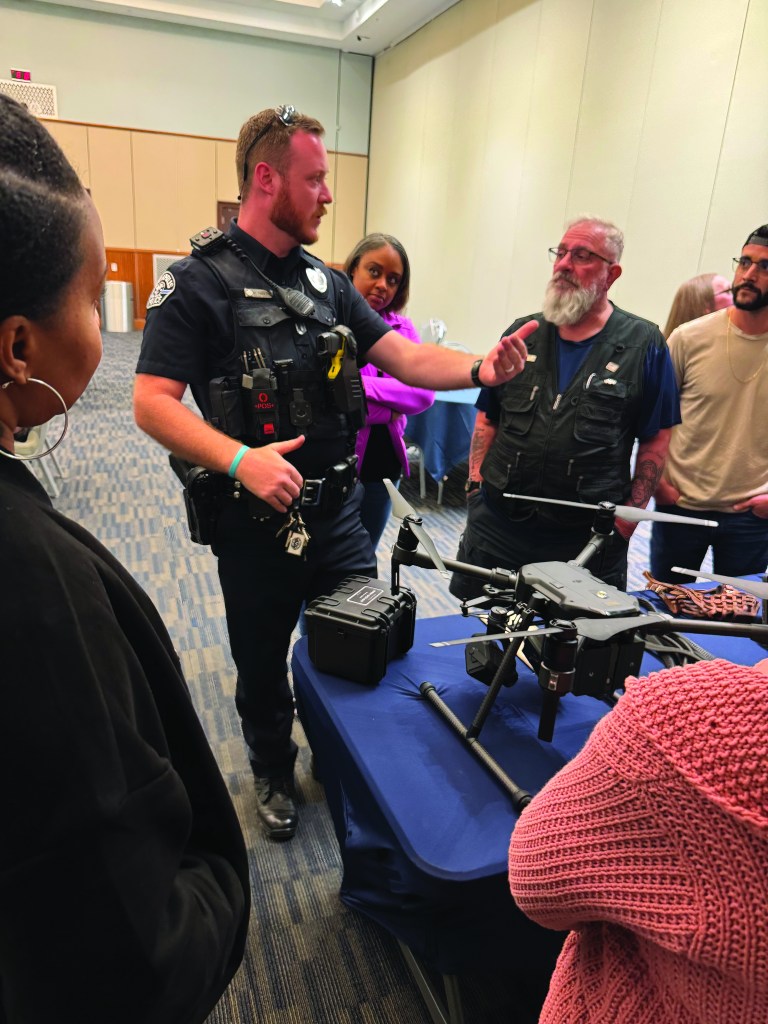
- One of Kannapolis’ officers who is FAA certified to fly a drone explains to students in the Civilian Police Academy all that the department’s $40,000 drone can do. It can read a license plate from at least two blocks away and has infrared capabilities to help find suspects on the run.
Photo by Elisabeth Strillacci
KANNAPOLIS — In the last class, students got an inside look at the patrol division, which I described a bit in the last installment, and this week we were introduced to the Special Response Team (SRT), often thought of as SWAT, and the K-9 unit.
It has been an incredible experience to get to know individual officers throughout the Kannapolis department, and I would encourage anyone and everyone to apply for this class. In our introductory class, Chief Terry Spry said that when George Floyd was killed, a lot of police departments received criticism from their communities, and there were rifts in the relationship between public and the departments.
But he said “not here.” He explained that he and his department work hard to build an open relationship with the public, so they trust their officers. Yes, there will always be those who do not, but over all, he said there were no local calls for “defunding the police” or outcries about local police behavior, and he believes it is because they try to be as transparent as the job allows.
During these classes, that has been in evidence. No question is off the table, and officers, no matter their rank, have been open to answering.
Meeting the SRT team was eye opening. The requirements in order to even be considered are daunting, and the amount of training, both initial and ongoing, is both startling and reassuring.
Not only do officers need to have exemplary records across the board, they must meet physical agility requirements well beyond those of a regular officer, and more than anything, they must demonstrate a nearly instinctive ability to remain calm under intense pressure.
The additional gear officers carry on SRT is another consideration. They have to be prepared for any and every situation, from making entry through a secured door to going into an unknown property not knowing what they will face. They have what they refer to as a bread truck filled with all the equipment they might need that they bring to scenes, along with their personal gear, and because this is not an ongoing assignment but a secondary post, it can sometimes take extra time for the team to assemble. Officers on SRT are posted full time to other positions, be it patrol or vice or school resource officer. They can be out with family, on regular assignment, even asleep when the text message comes that they are needed. That means in situations such as school shootings, patrol officers are first on scene and will establish a perimeter and begin to handle the situation until SRT arrives.
The team trains with Concord and Cabarrus teams as well, so when they are needed for backup or support, they can seamlessly slot in together because they have the same training.
We were given an opportunity to check out some of their equipment, including two of the long guns SRT has in their stable — but under close supervision.
As we moved on to the next section, we talked briefly about the department’s use of drones, a tremendous tool in their kit, but one that is subject to stringent regulations. Anyone who flies the drone must have FAA certification akin to that of an airline pilot, minus only the flying hours in the plane, and there are privacy restrictions they must obey. They can only observe what can be seen from the street unless they have a court-approved search warrant. But even meeting those restrictions, the drones can be a tremendous benefit. In addition to their use in investigations, because the largest drone they have has infrared capabilities, it can be used to suss out a suspect at night in a heavily wooded area, and it can read a license plate clearly more than two miles away.
Using the drone to search can also help cut down on man hours by eliminating the need to send multiple officers to a search area. Instead the drone can be sent up and make short, efficient work of the search.
The second half of the class was learning about the dogs that work with the department and how they have different roles. There are currently four multi-purpose dogs on the staff, who are training in both drug searches and search and capture of people and evidence.
The sergeant in charge explained that people make assumptions about police dogs that are incorrect, including that the dogs are pets.
“They are not pets, they are tools,” he said. “Don’t get me wrong, the officer handlers love their dogs. They are partners. And when a police dog retires, they go to their handler. But they are working dogs.” He explained that one of his former dogs had never been touched by his wife or children, because the dog remained a working dog all of his life.
But the department also has a bloodhound, the dog he currently handles, and that dog is not what is considered a “bite” dog. That’s not what he is made for. His job is to sniff out evidence, which he does incredibly well, but he also loves everyone, including children.
“If you asked him to bite he wouldn’t have any idea what to do,” he said.
And a sixth dog, a new addition, is Millie, who is a trained therapy dog to help officers through extreme traumas.
Multi use dogs are going to bite unless the handler recalls them, and even then, the dog has to have time to hear the recall, process it and stop what it is doing. If the dog is already too close, the bite is likely to happen anyway — because they are a dog, he said.
Multi-use dogs can be sent in to search a building or an area to find a human being, to find an object with human scent on it (which means they will bring back a lot of extra items in addition to evidence), to sniff out drugs or to protect their handler.
“They are allowed to bite in three situations,” he explained. “When sent to get a suspect, when their handler is attacked and they need to defend him, or if they need to defend themselves.”
The dogs initially go through intensive training with their handler at the start, and as one handler explained, “the dog does not know you when they bring them out for the first time to meet you, and sometimes a bite can happen then unintentionally.”
He said each handler is given a leash that is made specifically for them and their dog. They are given the leash, and when they line up to get their dog, the leash is put on their dog and the handler is given the leash and told to immediately keep the dog walking.
“If you give the dog time to realize they don’t know you, and are not sure they are supposed to be walking with you, it can be a problem for a minute,” he said. “You start immediately by taking the leash and letting them know they are now with you. You don’t give them time to consider it.”
Some dogs, especially young, highly motivated dogs, can end up nipping or biting a handler to express frustration when the handler is holding them back. But officers are required to give suspects three warnings that they are going to release the dog before doing so. That kind of nip, while it isn’t pleasant, is not the dog’s fault, though the handler does need to issue a correction so the dog gets refocused.
“The first part of training before anything else is obedience,” the sergeant said. “The dog has to listen to you. If they can’t do that, they wash out, never get to the rest of the training, because part of their testing is obedience and they have to be able to do it off lead.”
There are officers who volunteer to act as decoys, wearing protective sleeves or a full protective suit so the dog learns how to bite a suspect and bring them down. But the sergeant said even wearing the protection, bites hurt. The amount of force of the dog’s jaws will leave bruises and is uncomfortable at best, he said, though the teeth do not penetrate.
He went on to explain that many suspects who are trying to hide drugs do not understand the way dogs smell.
“If I walk in the house and my wife is baking a cake, lucky me, I smell the collection of ingredients coming together,” he said. “I don’t smell the flour and the milk and the eggs, I just smell cake. But dogs smell each individual ingredient.” He told the class about one instance in which someone had a truck full of boxes and his dog hit on all the boxes, but he wasn’t sure why. Officers pulled out a box. Inside was another box, then something wrapped in foil. Inside the foil was a layer of axle grease, then more tin foil then more axle grease. More tin foil, then a kilo of marijuana.
“Axle grease has a strong smell, and they assumed that it would throw the dog off,” he said. “But what they didn’t understand is the dog did smell the grease, and the cardboard and the tin foil, but he also smelled the marijuana.” The whole back of the truck was filled with similar boxes.
They took the class outside and showed us what it looks like when a dog is released on a suspect, and none of us thought we’d ever want to be on the receiving end. The sergeant did ask that we remain quiet, at a safe distance, and not engage in any big motions, because “the dog is going to zero in on you at that point, trying to determine if you are a threat.”
The pup who came out for demonstration is just at two years of age, and the dog and handler will reach their one year anniversary as partners in May. The officer explained that the dog is still very young, and very excited to work, getting revved up when the officer even begins to drive faster, and when lights and sirens go on, the dog is ready to work.
Police dogs are not dogs anyone should ever try to pet, and any handler is going to stop you long before that happens. The sergeant said some think officers are not kind to the dogs because they don’t allow that show of human affection, but he reiterated that every handler in the Kannapolis department loves their dog, and the animals are taken care of no matter what.
“They get the best vet care, because dogs are high liability, so they have to be up to date on all medical needs,” he said. “Whatever they need, whatever surgery or medical treatment, however long they will be out, this department takes care of them. And the bond between the dog and the handler is family. The dog is like my brother.” He added that handlers do have to purchase their dog on retirement, because they are city property and initial cost alone can be $15,000, but that has never been an issue.
“I do have to tell you, our chief has a soft spot for our dogs, so he will make sure whatever a dog needs, it gets done, including making sure they go home with their handler at the end of their career.”
This post was originally published on this site be sure to check out more of their content.
